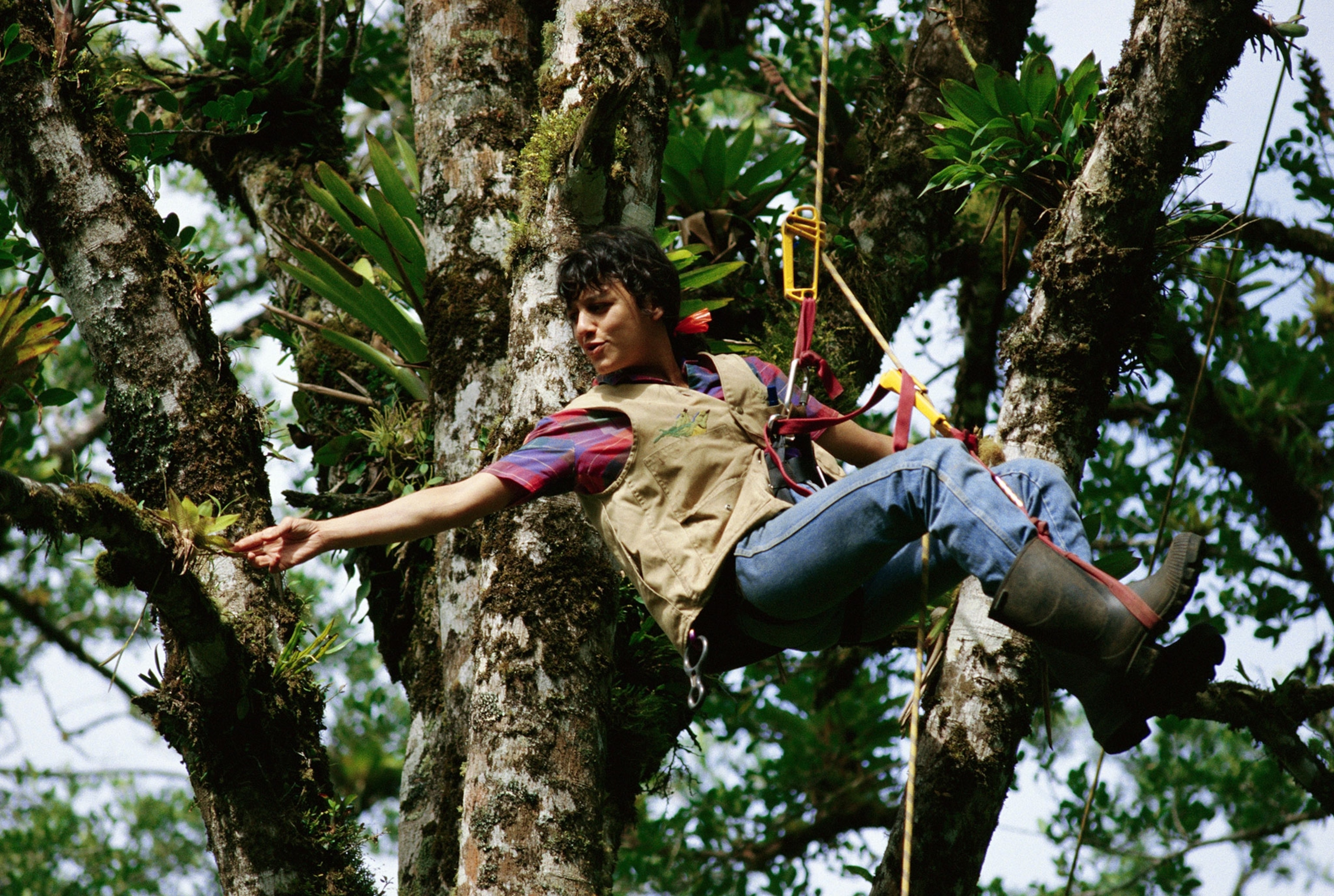
Biologist Wants Nature for Everyone - Including Prisoners
Nalini Nadkarni, ‘queen of the forest canopy,’ has extended her kingdom to include unorthodox settings like prisons.
It’s a long way from the lush, expansive treetops of a Costa Rican rainforest to the razor-wire lined confines of a U.S. prison, but Nalini Nadkarni is comfortable navigating both.
The renowned forest ecologist and multiple National Geographic grantee spent her early career enmeshed in tree canopies; her pioneering work in treetop plant life eventually earned Nadkarni the sobriquet “Queen of Forest Canopy Research.” But after years of field work and academia, she decided that her efforts needed a broader audience than science, academia and natural history buffs.
“I was preaching to the choir, so I began to ask myself how can I bring my message to others,’’ says Nadkarni, 62. “Rather than saying you need to read my articles or attend my lectures to understand my science, I took the approach of appealing to people in their own venues.”

Nadkarni developed nature programs for at-risk youth by enlisting rap artists, designed a TreeTop Barbie concept doll, and organized eco-fashion shows to better connect the masses to trees and forests. The half-Hindu, half-Jewish Nadkarni also spread nature’s gospel to religious groups after perusing the Koran and Bible for links to nature, identifying 328 references to trees and forests in the Old Testament alone.
But it’s Nadkarni’s work bringing science and nature programs to prisons that could have even more impact.
While teaching at Washington’s Evergreen State College, she studied the movement of trees by affixing a paint brush to twigs. Measuring wind-aided changes and calculating them over 12 months, she found that a tree can “move” up to 186,540 miles in a single year.
“I began to think of this lesson of trees to other entities that are static, or perceived to be static and stuck,’’ she says. “Prisoners are also stuck. But whether you’re a CEO or an inmate stuck in solitary confinement, what we have in common is humanity and a connection to nature.”
She eventually launched science and nature programs at Washington’s Cedar Corrections Center, where inmates, working with biologists, raised Oregon spotted frogs, a threatened species, and grew mosses in an effort to help replace what commercial harvests reduced growth in old growth forests.

Those efforts evolved into the Sustainability in Prisons Project, funded in part by the National Science Foundation, which has spread to 10 Washington state prisons and facilities in Oregon, California, Ohio and Maryland. The group's projects include recycling programs, beekeeping, organic vegetable farms, tree planting and flower nurseries. The efforts give inmates a sense of purpose, responsibility, teamwork and potential employment upon their release. The broader benefits are reduced recidivism and cost-efficiencies to prisons, Nadkarni says.
Now a biology professor and head of the University of Utah's Center for Science and Mathematics Education, Nadkarni has also brought nature to hard-core inmates housed in solitary confinement, beaming images and videos of forests, oceans, mountains and skies to recreation rooms.
While limited in scope, the impact has been dramatic. Among inmates housed for violent crimes or tendencies in the isolation unit at Oregon's Snake River Correctional Institution, those shown nature videos committed 26% fewer violent infractions, according to a study presented in August 2016 to the American Pyschological Association.
“We can’t bring nature programs to maximum security,'' Nadkarni says. "But what we’ve found is that by just exposing violent offenders to images of nature for an hour a day, it brings down their stress and anxiety levels, reducing violent tendencies."
Nadkarni says she hopes to publish her findings in a peer-reviewed criminal justice publication this fall, which could lead to more prisons adopting the nature movment.





